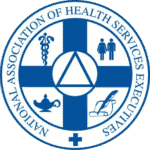Much has been written lately about the physician shortage looming in the next few years. Primary care in particular will be heavily impacted, with some estimates suggesting a shortage of nearly 50,000 family doctors by 2030. This makes the retention of your primary care physicians even more important; the loss of even one will have a heavy impact on care delivery.
Physician retention, especially in rural communities, is challenging. We’ve assembled five of our best tips to help ensure you keep your valuable talent long-term.
Five Retention Strategies for Primary Care
1. Improving work-life balance for the retained primary care doctor is vitally important.
Increasing the number of staffed nurse practitioners as well as physician assistants, or offering locum tenens for on-call are ways to protect the health of your valued family doctors. We already know that physician burnout is a huge factor in healthcare today, so enacting proactive strategies to counteract the frequency of this phenomenon will help with employee retention.
2. Increase benefits and compensation as high as you possibly can.
While community health centers and other rural or independent facilities will never reach the levels of large urban counterparts, organizations can and should address this issue before the next recruiter calls on your clinical teams.
3. Improve engagement by developing a community within your organization.
Do your employees have an understanding of the mission and vision of your organization? Are workflows efficient and do physicians and their staff play nicely with each other? Administration should work hard to ensure that team camaraderie is just as high as patient care delivery outcomes. Try to create a culture of family where everyone feels part of the mission and the team working so hard to achieve it.
4. Provide physician autonomy, allowing doctors to focus on the job at hand.
Assess clinical workflows to be sure doctors are working to their highest and best use. Ask your team whether the technology is efficient or if workflows are redundant. Try to create a culture of transparency where issues are addressed as they arise.
5. Make leadership development a priority by sponsoring doctors to attend seminars and conferences.
Give doctors and other knowledge workers the opportunity to establish themselves as leaders somewhere beyond the clinical setting. Allow doctors a seat at the table; invite them into key decision-making committees in order to fully engage and excite them in the overarching mission of the organization.
As family practice doctors grow increasingly in-demand, hospital and clinical care leaders must give real thought to retaining their best and brightest resources. The physician shortages ahead demand a proactive approach to engaging your teams or you will run the risk of losing them to the competition.
Contact UHC Solutions about ways we can help you improve the quality of life for your clinical teams while providing valuable resources to bridge gaps in patient care.





